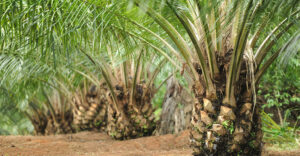
Paniai Regency is one of the oldest regencies in Meepago regions that have been expanded into three regions, namely Intan Jaya, Deiyai, and Dogiyai Regencies in Papua Province. In Paniai Regency, there are two major tribes with different culture. Both tribes here are Moni and Mee. Despite the difference, both tribes have very close kinship in terms of culture.
Moni Tribe has different culture and tradition from Mee Tribe. Moni has four clans residing in Paniai Regency. They are Zonggonau, Kobogau, Yatipai, and Dimbau clans. This tribe comes from Intan Jaya Regency.
In the past, the clan had a long travel due to warfare among clans. To defend the clan, some of the Moni Tribe fled their native villages and dwelled in Paniai. They then became part of Mee Tribe. However, they kept their native clan in their new residence.
Read also: Teh Bless, The Moi Tribe’s Conflict Resolution
Moni and Mee Tribes used to wage tribal warfare to defend their territories and their indigenous communities. The combat brought about casualties of war on both sides and the impact was so harmful.
Based on the legend from generation to generation, both tribes made a peace deal to end the conflict. They agreed to bring the dispute to an end in traditional way. They discussed the division of territorial border, mountain, and river. Mountain and river in which Moni Tribe passed through will become the rights of Moni. Consequently, Moni Tribe was not allowed to take or produce any harmful thing.
In communal life, both tribes have leaders as the tribal chief. The elected tribal chief should have a nurturing spirit and leadership. The tribal chief should also have abundant properties such as pigs and vast plots of land. Besides, the tribal chief should be able to resolve conflict or problem that might spark a dispute.
Read also: Sar, Marine Conservation a la Marori Tribe
The life of both tribes has different culture, language, and traditions. However, they have close kindship due to their mutual respect. They value each other on a decision making process particularly when it deals with a certain issue related to public interest.
Moni Tribe has their own distinction in problem solving. When there is dispute in discussion and there is no way out, then women will play a major role. Women will be responsible to resolve the dispute. They should get a way out from the discussion. This tradition has been preserved for a long time and even today.
Mee Tribe also has their own uniqueness particularly in terms of language noting that the tribe here has a number of clans. In addition, they have different territories. Every clan also has different languages. On the eastern part, the language is called Koha and the western area use Koya language. Despite the difference, Moni Tribe can catch on the dialect of both languages.
Read also: Maintaining Mother’s Language: Efforts to Save Marnese Ethnobotany Knowledge
Moni Tribe has the capacity to use the Mee languages as they live side by side. On contrary, Mee Tribe does not have such a capability as they could hardly understand the language spoken by Moni Tribe. For the reason, Mee Tribe will be cautious to use their tongue when they speak or are at public.
Moni Tribe becomes a minor tribe in the areas dominated by the Mee. Despite the lacking of attention given by Paniai government, Moni Tribe survives their lives while maintaining their culture and traditions. They defend their rights while developing their local potentials by farming and raising cattle. They also utilize other forests products such as rattan and orchid.
Editor: Nur Alfiyah & Leo Wahyudi







